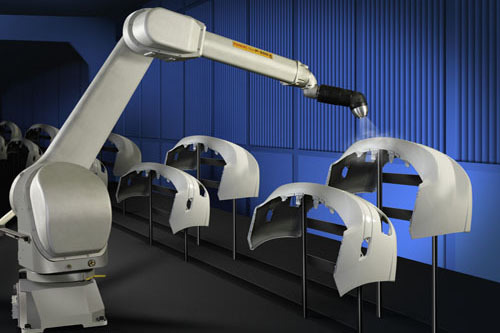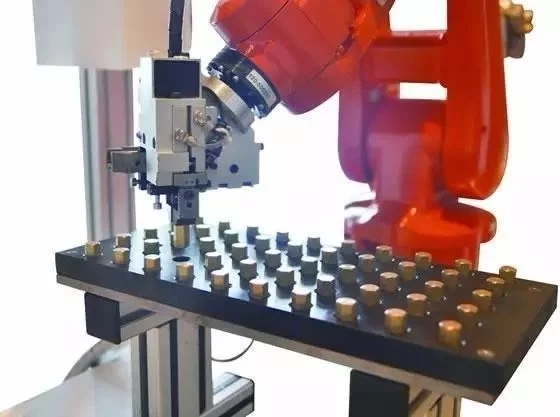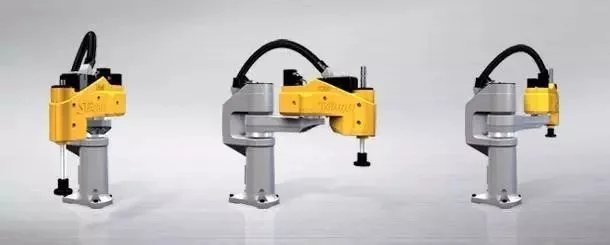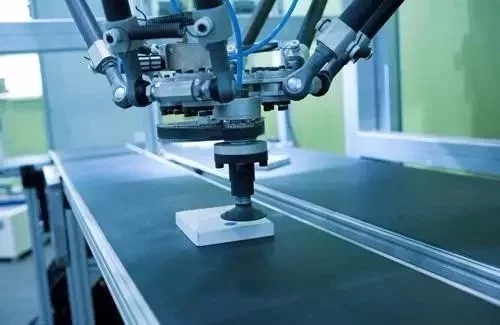
Support Team
Feedback:
support@nextpcb.comPCB industry is a technology-intensive and capital-intensive industry, but it is still a labor-intensive industry. A large number of automation equipment need manual operation and assembly line operation. A medium-sized PCB enterprise has thousands of employees.
With the industrial transfer and upgrading, the implementation of the new labor contract law, the rising cost of urban living brought by the transformation of economic structure, as well as the difficulty and mobility of the post-80s and 90s staff management, PCB manufacturers are facing more and more serious challenges of labor shortage and rising labor costs, and the consequent impact on production planning, product quality, and profitability.
At the same time, with the improvement of robot performance and the decline of price, "automation equipment + industrial robot operation" will replace the traditional "automation equipment + manual operation" production mode, which will become the transformation and development trend of the PCB industry.

An industrial robot is a kind of multi-joint manipulator or multi-degree of freedom robot for the industrial field. An industrial robot is a kind of machine that can automatically perform work and realize various functions by its own power and control ability. It can accept the command of human beings, and it can also run according to the pre-programmed program. Modern industrial robots can also act according to the principles and programs formulated by artificial intelligence technology.
In industrial production, industrial robots can replace human beings to do some monotonous, frequent, and repetitive long-time operations, or operations in dangerous and harsh environments, such as stamping, pressure casting, heat treatment, welding, painting, plastic forming, machining, and simple assembly, and in the atomic energy industry and other departments to complete the handling or repair of harmful materials to human body Art operation.
In the late 1950s, the United States developed a universal independent industrial automatic operation device based on the manipulator and manipulator, using servo mechanism and automatic control technology, and called it industrial robot; in the early 1960s, the United States successfully developed two kinds of industrial robots, which were quickly applied in industrial production; in 1969, the United States general motors used 21 industrial robots An automatic production line for welding car body is composed of three industrial robots. Since then, industrially developed countries have attached great importance to the development and application of industrial robots.
Because industrial robot has a certain versatility and adaptability, it can adapt to a variety of medium and small batch production. Since the 1970s, it is often combined with digital control machine tools to become a part of flexible manufacturing cells or flexible manufacturing systems.
An industrial robot is a kind of multi-function and multi-degree of freedom Mechatronics automatic mechanical equipment and system, which can complete some operation tasks in the manufacturing process through repeated programming and automatic control. Combined with the manufacturing host or production line, it can form a single machine or multi-machine automation system, which can realize a variety of production tasks such as handling, welding, sorting, assembly, and spraying without human participation Industry.
Since the first generation of robots came out in the United States in the early 1960s, the development and application of industrial robots have developed rapidly, and they have been widely used in production. They have become an important highly automated equipment in the modern manufacturing industry.
An industrial robot is mainly composed of a body (including mechanical trunk part, motor, reducer) and electric control (including drive and control system). Its function is to use the end of the actuator instead of the hand to grasp objects or tools to complete different tasks. At present, there are three mainstream industrial robots, including SCARA (four-axis parallel joint robot), Delta (parallel robot), and six-axis multi-joint robot (including more than six-axis multi-joint robot and derived dual-arm robot). The most remarkable features of industrial robots are summarized as follows:
The further development of production automation is flexible automation. Industrial robot can be reprogrammed according to its work tasks and the needs of environmental changes. Therefore, it can play a good role in the flexible manufacturing process with small batch, multi variety, balanced and high efficiency. It is an important part of flexible manufacturing system (FMS).
Industrial robots are similar to human walking, waist turning, big arms, small arms, wrists, claws and other parts in mechanical structure, and have computers in control. In addition, intelligent industrial robots have many human like "biosensors", such as skin type contact sensor, force sensor, load sensor, vision sensor, sound sensor, language function and so on. Sensors improve the adaptive ability of industrial robots to the surrounding environment.
In addition to the specially designed industrial robots, the general industrial robots have good versatility in performing different tasks. For example, different tasks can be performed by replacing the hand end manipulator (gripper, tool, etc.) of industrial robot.
In the early days, industrial robots were mainly used in the automobile manufacturing industry to complete welding, assembly, transportation, spraying and other work in the automobile production process. These links do not require high precision and speed of robots. However, the situation of the PCB industry is relatively complex. The application of robots in the PCB industry is mainly reflected in the loading and unloading, turnover, sorting, positioning and detection functions of each process. It is necessary to replace the manual operation of PCB processing equipment and detection equipment.
Due to the diversity and complexity of PCB board, there are single-layer board, double-layer board, multi-layer board, flexible board, hard and soft combined board, no hole board and porous board, which lead to more requirements for front-end actuator; there are also requirements for positioning accuracy and work beat, so the requirements for robot technology and integration technology are also higher in the application of industrial robot.
After nearly two years of exploration and practice in the industry, we try our best to help customers solve problems and meet their needs, and have accumulated experience in industry application.
At present, we have mature solutions for many processes in PCB industry, such as AOI, exposure machine, target drilling machine (ope, XZ), silver slurry hole filling, text inkjet, browning pre stacking, finished product loading, OSP, finished product cleaning, dome film reverse coating, LCD assembly, etc. The following focuses on three typical application cases of robots:

The traditional AOI scanning machine relies on manual plate placement, plate turnover and plate retraction. One person takes care of two machines, doing repetitive and monotonous actions every day. Moreover, the newly made circuit board will emit pungent smell, which will bring certain harm to the human body. The infrared light emitted by AOI scanning machine is also an invisible killer.
We use a six axis multi joint robot to replace the workers in charge of placing, turning and retracting two AOI boards. Each shift can complete the retraction and retraction of more than 700 PCB boards, and the overall efficiency can reach 1 piece / min (including the AOI machine scanning time). If we can further connect the loading and unloading transportation line with the retracting and releasing board machine to the AGV for fixed line transfer, we can realize the fully automatic production of the upper and lower processes.
Nextpcb - China's PCB manufacturer, producing PCB & assembly, we choose the most advanced equipment, committed to serving the global service providers and engineers, quality assurance, fast delivery.

At present, there are few complete detection equipment for coil short circuit of multilayer board on the market. Most detection equipment relies on manual work. For PCB board with large aperture, it is necessary to manually put the board on the detection equipment and then turn on the equipment for detection. For PCB board with small aperture, it is necessary to manually hold the equipment (probe) to detect each coil. We use SCARA robot to complete the loading and unloading and positioning of the detection equipment, and realize the one-time detection of all coils of the board with large aperture; For the board with small aperture, we use SCARA equipment to fix the probe at the executive end. Through visual positioning, we use the probe to detect each coil. Our equipment also effectively avoids missing detection due to small or large aperture of coil during manual operation. Compared with manual operation, it can significantly improve the detection efficiency and avoid the quality problems caused by missed detection.

The existing FPC trays are manually picked up one by one and put into the plastic suction tray. Because the FPC is soft and thin, it is very inconvenient to pick up, so the efficiency will be greatly reduced. Delta800 plus a set of vision system can pick out the qualified ones from the disordered FPC pile, and then put them into the plastic suction tray according to the requirements, and the effect is not inferior to manual. His speed can reach 60 pieces / min, which can completely replace manual sorting and loading.
Like the automobile industry and other manufacturing industries, industrial robots in the PCB industry instead of manual bring many advantages to enterprises.
At present, the application of industrial robot in PCB industry has just started, and there are still many problems to be solved. Many operation lines in PCB industry are non-standard products. In the process of robot application, it is limited by the existing operation space and the original equipment capacity. In the face of the influence of different PCB material factors, it is also necessary to consider the application of various sensors to improve the intelligence of robots, and at the same time, it is also necessary to consider training a group of employees who can operate and maintain robots for manufacturers.
In the future, the application of industrial robots in PCB industry will present the following trends:
Still, need help? Contact Us: support@nextpcb.com
Need a PCB or PCBA quote? Quote now